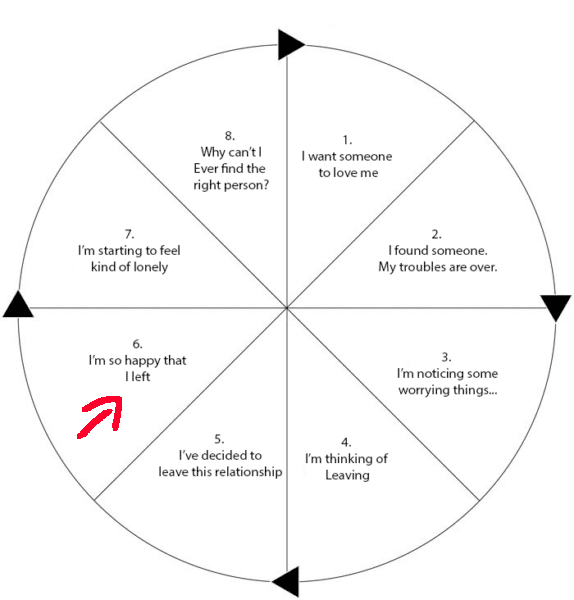Today we’re going to be looking at if it’s normal to move on quickly after a breakup.
The short answer to this is that it depends on what you consider to be “normal.” For example, our research has indicated that most people tend to move on from a breakup about six months to a year after the breakup occurs. So, theoretically any time your ex is moving on to someone else before then can be considered “quick.”
However, this is a really nuanced topic and really requires us to take a hard look at the following topics,
- What Is The Normal Timeframe That It Takes For Someone To “Move On” After A Breakup?
- Taking A Deeper Look At Rebounds
- Dismissive Avoidants Aren’t As Likely To Quickly Jump Into Another Relationship
- Fearful Avoidants Are More Likely To Be Caught In On Again/Off Again Relationships
Let’s begin!

What Are Your Chances of Getting Your Ex Boyfriend Back?
Take the quizThe Normal Timeframe That It Takes For Someone To “Move On” After A Breakup
When I first started to plan this article out the major issue I kept running into was determining what “quickly” meant.
Sounds sort of ridiculous, right?
But whose to say what’s quick or not. For one person “quick” might be two weeks. For another, “quick” might be two months.
What the general public really lacks when looking at this question is creating a baseline of what is the “normal average” in which someone moves on after a breakup.
My first thought was to take a deeper look at when rebound relationships started. However, I thought that wasn’t quite what was needed. Rebounds in general are considered “quick.”
What we need is something to compare “quick” to.
It wasn’t until I stumbled across this article, from Bustle, of all places that I found an expert who defined the average time it takes to “move on” from a breakup,
Many times, people are ready to start seriously dating anywhere from six months to a year after a major breakup, but it still largely depends on the length of time they spent in the relationship, Alexis Nicole White,
So, you are considered normal if you move on in this time frame,
Six Months/One Year = Normal
Therefore, any person who moves on to a new individual before that, statistically would be considered moving on too quick.
They’d be considered going on “the rebound.”
Let’s Take A Deeper Look At Rebounds
You may think you know everything about rebounds but I’m here to tell you that you don’t. In fact, I’m about to blow your mind when it comes to them.
Now, I consider rebounds to be extremely relevant to this discussion we are having for the simple fact that rebounds by definition are a relationship that happens quickly.
In other words, I consider them to be essential to answering the question of if it’s “normal” to move on quickly after a breakup.
Basically if most people go on the rebound after a breakup then moving on quickly has become the norm. If most people don’t go on the rebound after a breakup then it’s not normal.
So, what’s the answer?
Well, believe it or not but I couldn’t find any research on this, crazy, right?
So, I do what I always do when I hit snags like this. I did the research myself using my own private facebook support group.

What Are Your Chances of Getting Your Ex Boyfriend Back?
Take the quizHere was the exact question I asked in the poll,
So, this is weird. I’m writing an article about rebound relationships. Specifically I’m trying to answer the question of how common they are. Yet, no matter how much I dig I can’t find anyone that has done any research on this. Soo…. Let’s do it ourselves.
For reference, I’m defining the average rebound relationship as starting three months post breakup where you haven’t dealt with your feelings from your ex.
Here’s the question; In your previous relationships, on average, how long would you say it takes for you to move on to someone new?
The results were pretty drastic.
- 26% of people said that it usually only took them 1-3 months to move on after a breakup
- 11% said that it only took them 3-6 months to move on
- 60% said it took them 6-12 months
So, it seems from this data that it’s pretty clear to me that rebound relationships are not the norm. In fact, this data proves that having an ex move on “quickly” after a breakup isn’t usually normal compared to average relationship trends.
Now, that doesn’t necessarily mean a rebound is a band thing. Yes, most will fail but in some cases it can be helpful in the moving on process from some people. ‘
No judgement here.
What I’m more interested in now is what’s going through someone’s head when they rebound?
What makes us want to move on quickly? I think the answer lies in looking at attachment styles.
How Avoidant Attachment Styles Play A Role In How Quickly We Move On
Unless you’ve been living under a rock (or haven’t been reading my blog for the past year) you’d know that 2022 has been the year of the avoidant.
To give you some background, an avoidant attachment style is a subset of attachment theory which is defined by Wikipedia as,
Attachment theory is a psychological, evolutionary and ethological theory concerning relationships between humans.
Basically there are four core attachment styles
- Secure
- Anxious
- Avoidant
- Fearful
Now, I consider the avoidant attachment style to be quite relevant to our discussion namely because of this graphic right here,
This graphic basically outlines the entire life of a relationship for an avoidant.
And yes, it’s designed to be a wheel because an avoidant is often trapped in a prison of their own making without realizing it.
Before I explain why this graphic is relevant to our discussion let’s do a quick breakdown of the avoidant attachment style.
Avoidant Attachment Style: Generally a person who values their own independence over their relationship. Natural lone wolves. Avoid emotional connection with others when their independence becomes threatened.
But how does this relate to rebounds?
Ok, look at the graphic above. There are eight stages to that wheel.
- The avoidant wants someone to love them
- They enter into a relationship with you
- They notice some worrying things in the relationship
- They think of leaving you
- They actually leave you
- They are happy they left you
- They begin to feel kind of lonely
- They wonder why they can’t ever find anyone
To make our lives easier I’ve decided to color code the wheel and divide it up into four distinct stages
- Peach Color – Honeymoon period
- Pink Color – Problems Arise Stage
- Light Blue Color – Relief Period
- Green Color – Depression Period
So, where this becomes relevant for us actually occurs in that green color. Here, I’ll shade it really green.

What Are Your Chances of Getting Your Ex Boyfriend Back?
Take the quizAlmost every avoidant, after a breakup hits this point where they begin to feel sorry for themselves.
Why is it I can’t ever find the right person for me? This period often leads them to react in one of two ways and their attachment style will determine it.
Here’s the tricky thing about avoidants.
There are really two types.
- Dismissive Avoidants
- Fearful Avoidants
And based on what type of avoidant you are dealing with will give you some insight into why they are moving on so quickly.
It doesn’t seem like it would make sense, right? After all, aren’t avoidants the type of person who wants to be alone?
Well, yes and no.
According to Free To Attach,
And avoidant can have a depressive episode from 2-4 months after a breakup, manifested in feeling numb, disconnected and meaningless, which they may try to repress.
Want to take a guess at how an avoidant will try to repress those feelings? By distracting themselves with someone else.
Now, that doesn’t necessarily mean they will get into a rebound. They can just as easily stay quiet and repress all interaction.
But it really depends on the type of “avoidant” you are dealing with.
Let’s talk about that now.
What is the difference between a straight up dismissive avoidant and a fearful avoidant?
It’s best to think of them as being on a spectrum.
On one end of the spectrum you have extremely anxious behaviors.
- On the other end of the spectrum you have extremely avoidant behaviors.
A dismissive avoidant is going to to sit firmly in the avoidant camp whereas the fearful avoidant will bounce between being extremely avoidant and anxious.
Dismissive Avoidants Usually Aren’t As Likely To Immediately Jump Into A Rebound
Why?
Well, while they can use others to “repress” their complicated feelings from the fallout of a breakup, I believe they will only consider quickly moving on after their “separation elation” wares off.
Sometimes that can take up to 4 months to occur.
What’s separation elation?
Remember this part of the circle?

What Are Your Chances of Getting Your Ex Boyfriend Back?
Take the quizHere’s another great quote from Free To Attach on it,
After a relationship ends, people with an avoidant attachment style tend not to show much anxiety or distress, often feeling an initial sense of relief at the relinquishing of obligations and the sense that they are regaining their self-identity, and not tending to initially miss their partner – this is “separation elation” as the pressure to connect is gone.
Fearful avoidants, well they are another story.
Fearful Avoidants Are More Likely To Quickly Move On After A Breakup
The one adjective I would use to describe a fearful avoidant would be volatile.
They are more likely to be prone to the mood swings of the breakup and while they will go through that separation elation period it doesn’t last anywhere near as long as an avoidants.
Remember, a dimissive avoidant is all about their independence.
To a certain extend so is a fearful avoidant but that anxious side, well when it takes control we can skip right to the “depressive episode” that causes them to want to find someone else ASAP.
This is why I think people with the fearful avoidant attachment style are a lot more likely to have a volatile relationship history.
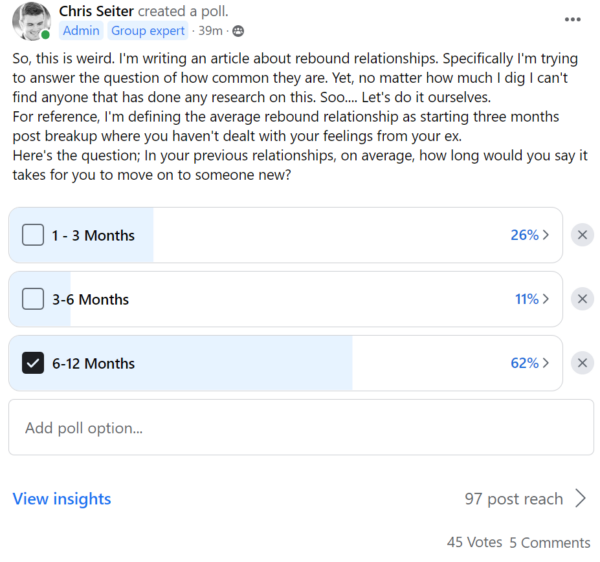
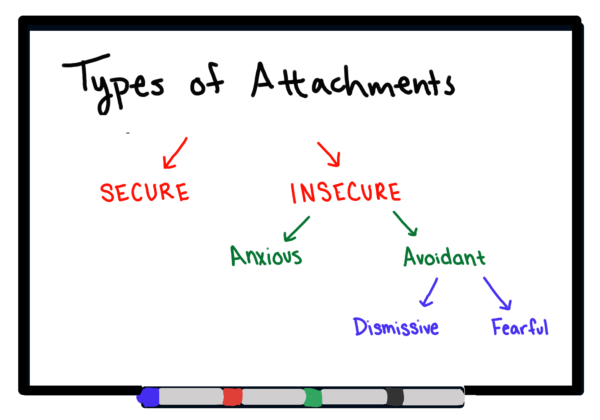
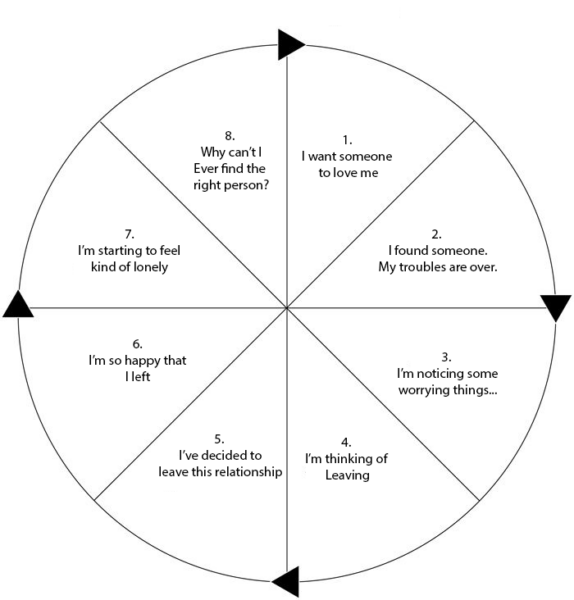
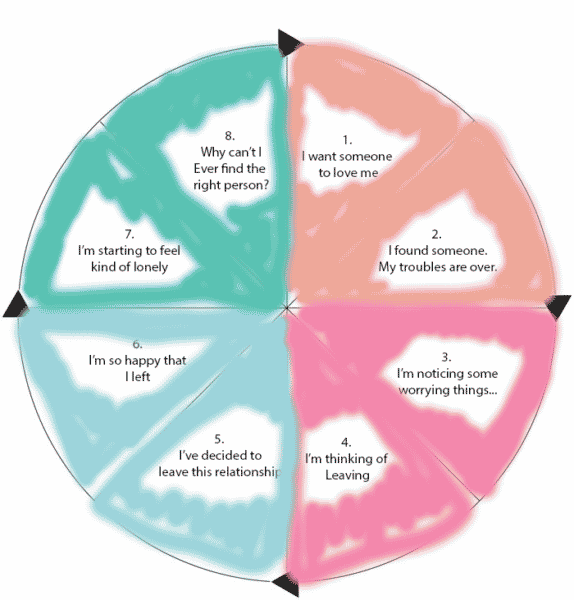
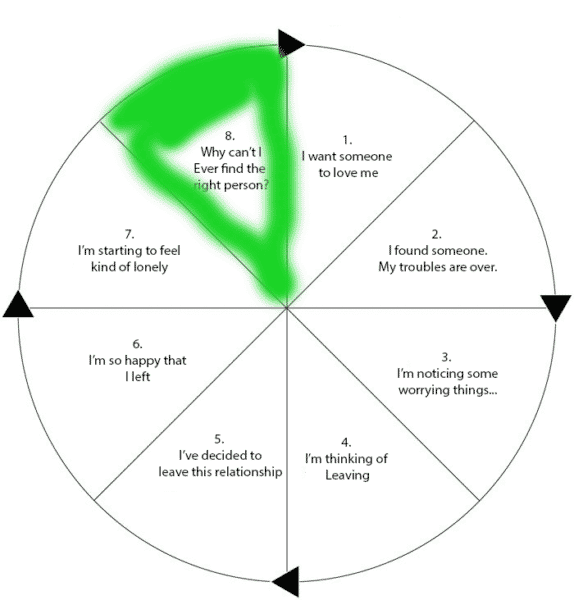
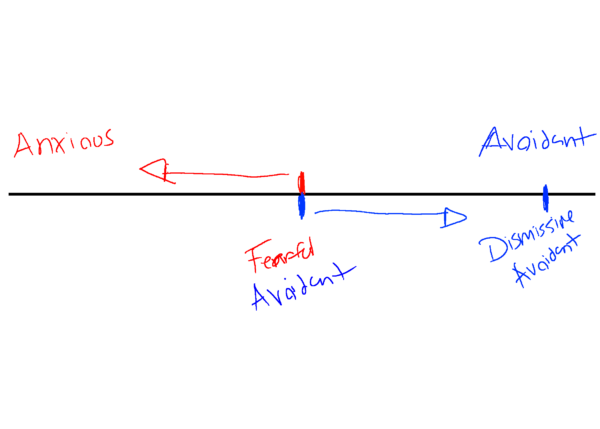 On one end of the spectrum you have extremely anxious behaviors.
On one end of the spectrum you have extremely anxious behaviors.